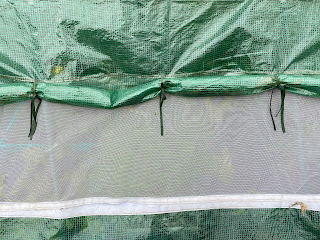 |
| Black eyed peas and collard greens |
Sunday, December 28, 2025
It is a Southern tradition to have black-eyed peas and collard greens to usher in the New Year. My grandmother was originally from the hills of Tennessee and moved to southeast Missouri as a young girl. Everyone I know that grew up in southeast Missouri has 'em on New Year's Day.
History of black-eyed peas and collards
Black-eyed peas were first domesticated in West Africa and widely grown in Asia. The "good luck" traditions of eating black-eyed peas for the New Year go as far back as Babylonian times (2500 years ago). The tradition then was to have bottle gourd, leeks, black-eyed peas, beets, spinach, and dates as they were all symbols of good luck.
This Jewish tradition was brought to the southern US in the 1700’s. Today, the good luck Southern meal includes peas for prosperity (coins), mustard greens for money (green backs), and pork for moving forward. Cornbread is also part of the meal and represents gold.
George Washington Carver encouraged the planting of black-eyed peas because they fertilized the soil, are nutritious and very affordable. Black-eyes peas are chock full of nutrition. They contain protein, calcium, vitamin A, folate, magnesium, iron, phosphorous, manganese, and lots of fiber.
Recipe for your good luck peas
To cook black-eyed peas, I add some ham and diced onion and simmer in chicken broth. I simmer until tender. You can add vinegar or some hot peppers for a different taste. If using your own homegrown beans, here are tips for using dried beans Use dry beans instead of canned
Growing your own "peas"
Black-eyed peas are a subspecies of the cowpea and is also known by the name of goat pea. They are not actually a pea at all, but a bean. Black-eyed peas are a warm season crop that is not susceptible to pests or disease. Beans should be planted after all danger of frost has passed and the soil is warm. They are very drought tolerant so little watering is needed. I start my beans indoors in April and set out around Memorial Day. They are easily grown directly in the garden. Just plant seeds after the soil is warm. Growing beans
If using just for fertilizing the garden soil, legumes (peas and beans) should be cut before they start producing pods as the production of the seed pods use up a lot of the nitrogen fixed in the roots. Even if growing to eat, leave the roots when removing the vines at the end of the season. Those nodules you see on the roots are stored nitrogen. To increase the nitrogen in the roots, an inoculant of rhizobial bacteria should be coated on the seed at planting. You can mix a little syrup (1-10) with water to dampen the seed before dusting with the inoculant. This will greatly increase your harvest.
A side benefit of growing black-eyed peas is that the flowers produce copious amounts of nectar for pollinators, like bees. Be sure to not use any pesticides on your black-eyed peas as they will kill the bees, too. Natural, organic pest strategies and how to make your own bug sprays
For fresh peas, you harvest the beans when the peas have just begun to swell in the pod and are 2-3" long. After harvesting, simply shell the peas into a freezer bag (don’t forget to label with type and date). By harvesting the fresh peas, it will encourage more pods to be formed, giving you a larger harvest.
For dried beans, wait until the pods have dried completely on the plant. Pick the pods and shell. I use a quart jar to store my dried beans until needed. When ready to use, rinse the beans then boil on low until tender with 4 cups of water to 1 cup of beans. The time needed will depend on the age of the dried bean. The older the bean, typically the longer it takes. You can also soak over night to reduce cooking time.
Growing your own collards
Collards are a southern favorite and also chock full of nutrients. They come from the same family as kale and were likely cultivated 2000 years ago by the Greeks.
Greens like lots of nitrogen so they are great to interplant with your summer black eyed peas. They are best planted in spring and fall as they prefer cooler temperatures. Spring planted collards will produce all summer. Fall planted collards will continue to produce into winter and will survive down to 0 F. Collards will grow all through the winter in my Zone 7 garden.
Plant in rich soil 1/4" deep, 18-24" apart and keep moist until sprouted. Use collards how you would kale, from adding to salads to steaming and sautéing.
For more on growing beans, Legumes-peas for spring, beans for summer. For more on growing collards, Grow a southern favorite-collards. For preserving, Freezing the extras for winter
Try some good luck food for your New Year's!


















